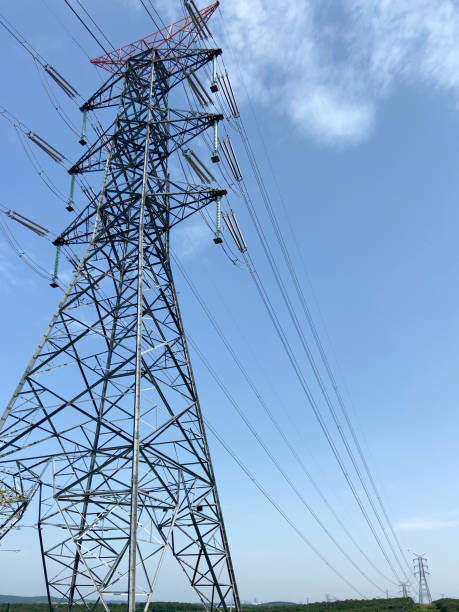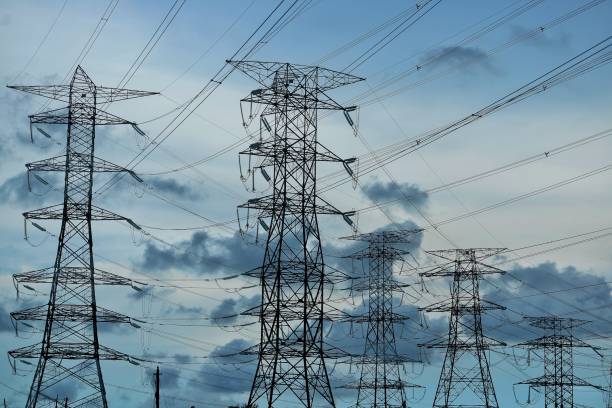Principles, characteristics and advantages of laser processing technology

1. 1 Principle of laser processing technology
Laser processing is a very important high-energy beam processing method, which has the characteristics of strong laser directionality, high brightness, good monochromaticity, and good coherence. The principle of laser processing technology is that the laser light emitted by the laser generator is converted and focused by the lens to obtain a highly parallel columnar or strip-shaped beam. The extremely high energy density is obtained and concentrated into a small area on the processing material. After absorbing the energy of laser irradiation, the material heats up rapidly in a very short time and undergoes a series of physical or chemical changes depending on the properties of the processed material, causing it to be melted, ablated or even vaporized. As the laser energy continues to be absorbed, the metal vapor in the pits of the processed material expands rapidly, and the corresponding pressure suddenly increases, causing an explosive molten substance to be ejected at high speed, and a highly directional shock wave is formed inside the processed material ( Thermal stress), so as to achieve the purpose of removing, connecting, modifying and separating the processed materials, changing the properties of the materials, etc. It is the comprehensive effect of high-temperature melting of the processed material under the photothermal effect and being thrown out by the shock wave. Its essence is to focus a laser beam with a certain power density on the processed material, so that the laser and the material act under the photothermal effect to produce high-temperature melting and shock wave. A comprehensive process of shock wave ejection. Through the interaction between the laser and the processing material, the process can be divided into four physical description stages: laser absorption by the processing material, heating of the processing material, melting and vaporization of the processing material, and laser plasma shielding phenomenon.
1. 2 Characteristics and advantages of laser processing technology
Compared with other traditional processing technologies, laser processing technology has unique characteristics and advantages.
Strong multi-process integration.
Generally, there are many processing processes for transmission towers, including cutting, drilling, welding and other processes. The use of ordinary processing technology can only realize a single process operation, resulting in extended processing time and failure to integrate resources. Laser processing technology can complete multiple processing procedures on the same equipment, greatly improving operating efficiency and achieving good economic benefits.
Good processing quality.
During the processing, due to the high energy density of the laser beam, its processing movement speed is fast, the action time is short, the heat affected zone is small, and the deformation of the processed material is small. There is no need for subsequent secondary processing, which reduces processing costs.
Non-contact processing: No tools are needed for processing.
There is no problem of tool wear, replacement and disassembly. No mechanical force is generated. There is no noise, low vibration during processing, no pollution, and it is green and environmentally friendly.
Wide processing range:
It can process metal materials, non-metal materials, composite materials, wood, etc. It can also process materials with high hardness or brittleness and high melting point. In addition, the shape of the processed materials is also relatively wide.
Good operational flexibility.
Because the laser beam is easy to guide, gather and diverge, its working direction can be easily controlled. Combined with the CNC machining system, complex workpieces can be processed to achieve automated processing.
Good anti-interference performance.
It is not subject to interference from electromagnetic and external environments. It can be processed in the atmospheric environment and can perform various processing on workpieces through optically transparent media.
High material utilization.
Use automatic typesetting, co-edge processing and image nesting to maximize material utilization and significantly reduce material costs.
The inevitability of the application of laser processing technology in the manufacturing of transmission towers

The main manufacturing processes of transmission towers include blanking, hole making, marking, angle cutting, bending, assembly, welding, galvanizing and packaging. The processing is mainly based on angle steel and Plate raw materials are mainly used, and based on laser processing technology and the structural characteristics of transmission towers, the main advantages are used in the processing of plate parts. Existing tower processing technology cannot meet the requirements of the tower manufacturing industry for rapid response to the market and priority on quality and efficiency, and cannot meet the needs of the tower manufacturing industry. In addition, there are a large number of irregular structures in the tower structure, and their materials and specifications are also diverse. The use of laser processing technology can effectively ensure the dimensional accuracy and assembly quality of structural parts and improve production efficiency. For now, laser processing still has factors such as high processing costs, high equipment maintenance costs, and insufficient adaptability, which restrict its processing applications. However, with the gradual decline in laser prices and the continuous improvement of equipment flexibility and intelligence, Improvement will definitely accelerate the application of laser processing technology in the tower manufacturing industry.
Typical applications of laser processing technology in transmission tower manufacturing
Laser cutting In the development of laser processing technology
Laser cutting was first used in industrial manufacturing. It has fast cutting speed, high flexibility, good cutting surface quality, and can directly process finished components. Compared with conventional flame, plasma cutting and shearing machines, due to its larger energy per unit area, it can be used for processing high-precision products with smaller cutting slits. It has small thermal deformation, good cutting section quality, small cutting taper and reduces the need for follow-up operations. It also has good adaptability to secondary processing, transfer and grinding, etc. for oval holes, curved surfaces, etc. It can also achieve one-time processing of cutting and beveling, and can realize a variety of bevel forms. At present, CO2 laser cutting machines and fiber laser cutting machines are mainly used for transmission tower plate processing. Laser cutting products involve components such as tower feet, connecting plates, and hanging wire boards in the tower. These components are irregular and have different materials and specifications. The thickness is mainly 6 to 30 mm. The cutting material material can be Q235. ~ Q420 high strength plate. For a ±800 kV DC transmission angle steel tower, the processing volume of plate parts is about 20% (335 t). Compared with the traditional processing method, if a fiber laser cutting machine with a total power of 30 kW is used for processing, the laser cutting machine The processing time is 135 h, and the processing efficiency is: 65 t/d for traditional processing and 64 t/d for laser cutting. It can be seen that laser cutting has certain production efficiency advantages. The most important thing is that laser cutting can achieve common edge blanking. The typesetting is closer than the traditional method. According to industry data, the plate utilization rate is increased by 2% to 5%. This project alone can save materials 16. 75 t, its cutting size accuracy is also better than the national standard. Through the microhardness test of the cut surface, it is found that the hardening effect of the upper surface is relatively high, but its hardness will decrease significantly under the action of hot-dip galvanizing.
Laser drilling In the traditional manufacturing of transmission towers
Mechanical punching/drilling is usually used for drilling. For processing materials that are limited, laser drilling has the advantages of non-contact, high production efficiency, high processing accuracy, fast speed, low cost, and no tool. It has low loss and high economic benefits. It can process oblique holes and special-shaped holes with a large depth-to-diameter ratio without producing chips or burrs. It is suitable for a wide range of materials, and its processing hole diameter can range from 0. 2 μm ~ 1. 5 mm, and are widely used in industrial manufacturing. Laser drilling can be divided into replication method (or impact drilling) and contour detour method, which can be divided into single-pulse drilling and multi-pulse drilling, ring-cut drilling and spiral drilling respectively. In recent years, with the emergence of ultra-short pulse lasers, the quality of laser drilling has made a qualitative leap, further promoting the development of laser drilling technology. Laser drilling can also be used to process components such as tower foot plates, connecting plates, angle steel tower bodies, and tower foot rod connecting bolt holes in the manufacturing of iron towers. Its processing efficiency can be increased by about 8 times, and its tensile strength is higher than that of traditional processes. Improve 2. 4% ~ 16. 0%. The machining accuracy has also been significantly improved. An analysis of the mechanical properties of the heat-affected zone around the hole wall shows that the surface of the hole wall has 0. 5~0. In the heat-affected zone of 8 mm, the upper part of the hole is deeper than the lower part of the hole, and the effect becomes more obvious as the plate thickness increases. The transformation of the organizational structure during the hot-dip galvanizing process will release the internal stress and improve it. .
Laser welding In the manufacturing of transmission towers
Laser welding can be used for the welding of tower feet, hanging wire plates and other components. The welding of traditional tower structures mostly uses CO2 gas shielded welding, submerged arc welding and manual arc welding. This will This causes problems such as large welding deformation, heavy manual work, excessive welding slag splashing, and affecting the occupational health of workers. In addition to effectively solving the above problems, laser welding also has large penetration depth, narrow heat-affected zone, and is not affected by external conditions, so it is widely used in industrial fields. According to the different characteristics of the weld, laser welding can be divided into thermal conduction welding and deep penetration welding. Thermal conduction welding is generally used in welding fields with shallow molten pool depth and small width requirements, and deep penetration welding is suitable for general machinery manufacturing. field. In the past ten years, with the rapid development of laser welding technology, welding processes have also been constantly innovated. At present, various laser hybrid welding technologies such as laser-arc hybrid welding, laser filler wire welding, laser flight welding, laser brazing and so on have appeared. Process, applied to the processing of complex components.
Laser marking
Laser marking In order to facilitate on-site installation of transmission towers and effective traceability and process monitoring of the quality management system, power grid companies usually require marking on the surface of tower components. The marking content is often basic information such as the name of the engineering tower type and component number. Traditional If a pneumatic typewriter is used to achieve this, there may be blurred writing and loud operating noise. However, laser marking has the characteristics of fast speed, high font quality, deep depth, small local thermal effect, clean and pollution-free, and can realize automated processing. It is fully applicable to tower manufacturing. . According to the different laser energy of the laser, the mechanism of laser marking can be divided into three situations: heating marking, melting marking, and vaporization marking. In addition, with the development of information technology, more and more business managers attach great importance to the integration and application of new generation information technology and manufacturing industry, which also puts forward higher requirements for laser marking. The combination of QR code technology and laser In-depth integration of marking will be one of the future development directions of laser marking.
Laser rust removal
Laser rust removal and hot-dip galvanizing pretreatment of transmission towers can remove various dirt, grease, rust, oxide scale and welding slag on the steel surface, ensuring the cleanliness and certain “roughness” of the steel surface, which provides the basis for subsequent plating and plating. The zinc process lays a solid foundation. At present, the method used is mainly pickling with hydrochloric acid, which is easy to cause pollution and damage the base material. Laser rust removal has the advantages of high cleaning degree, good controllability, and green environmental protection. With the continuous introduction of national environmental protection policies, people are paying more attention to With the increasing awareness of environmental protection and the gradual development of the laser industry, laser rust removal is used to replace traditional rust removal methods. Green and environmentally friendly laser rust removal technology is gradually being applied in relevant fields and has broad development prospects. Domestic laser rust removal technology started relatively late, and most of it is still in the laboratory research stage. There is still some distance to go before the practical application of laser rust removal technology in industry.


